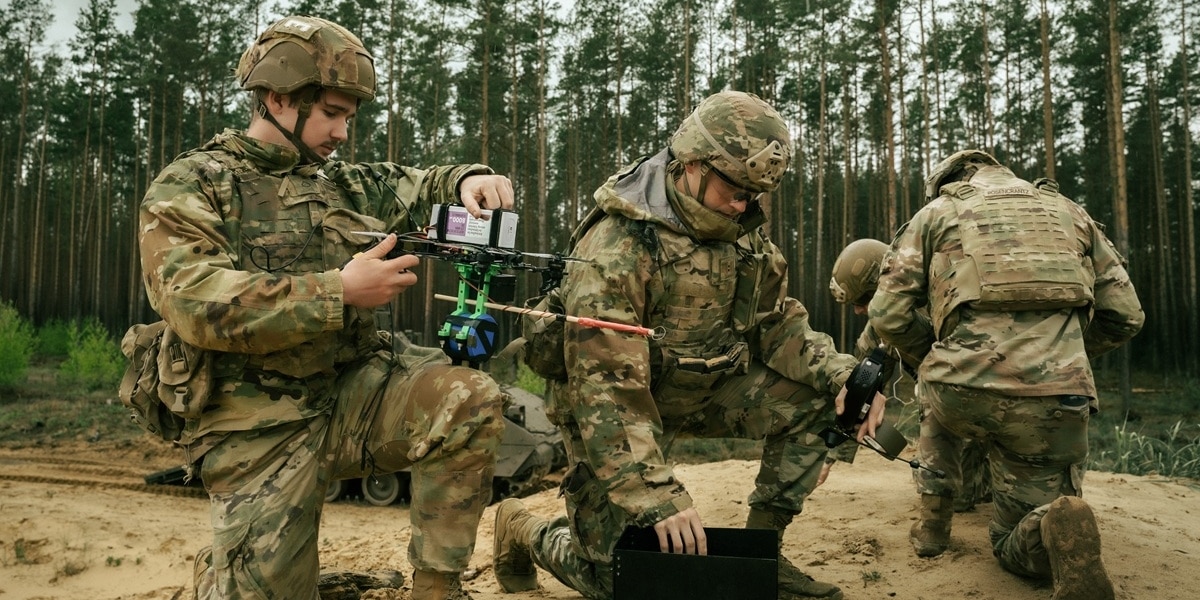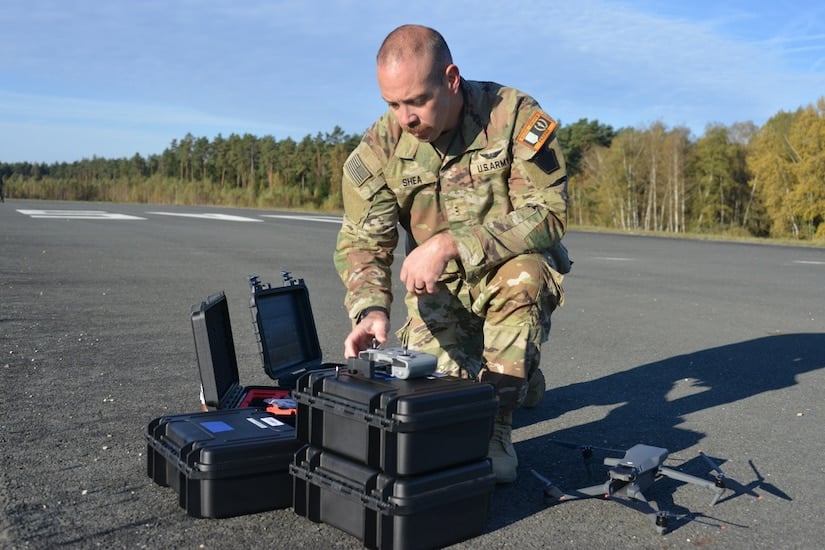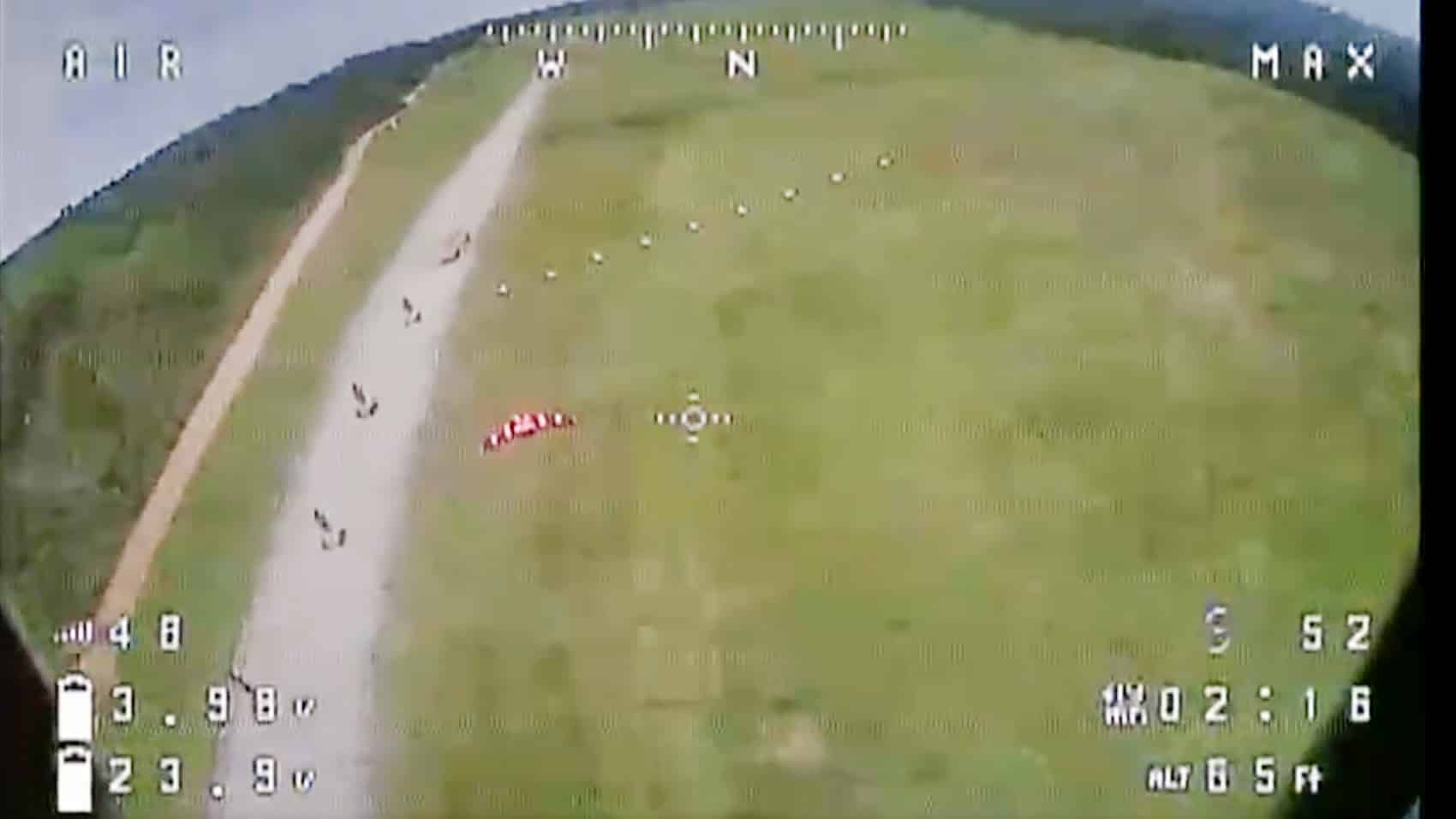Army Paratroopers Score First Drone-on-Drone Kill in Alabama

In the world of drone warfare, we often hear about sophisticated, multi-million dollar systems. But in the skies over Alabama, a group of US Army paratroopers just proved that sometimes, all you need is skill, grit, and an FPV drone rigged with a claymore explosive.

In a landmark achievement at Fort Rucker’s UAS and Launched Effects Summit, soldiers from the 173rd Airborne Brigade successfully conducted the Army’s first-ever live drone-on-drone takedown, as Yellow Hammer News reports it.. It wasn’t a clean, push-button affair from a control room miles away. It was a gritty, hands-on victory that marks a huge leap in the combat capability of conventional ground troops.

A High-Stakes Dogfight
Picture the scene: a soldier, goggles strapped on, is flying an FPV (first-person view) drone with lightning-fast reflexes. Their target isn’t on the ground; it’s another aircraft. They close in, line up the shot, and detonate their payload—a claymore mine—shredding the target drone and sending it plummeting from the sky.
This incredible feat was the culmination of weeks of intense preparation by the brigade’s Bayonet Innovation Team, working alongside the Pennsylvania Army National Guard and Army engineers. 1st Lt. Francesco La Torre, an innovator on the team, described the action in stark Star Wars terms: this wasn’t Luke Skywalker’s clean shot on the Death Star; this was Darth Vader methodically hunting down rebel fighters.

The takedown, executed by Chief Nate Shea, was a testament to raw piloting skill. It’s a powerful demonstration of how accessible FPV technology, combined with existing munitions, can be turned into a potent and effective air-to-air weapon.

The Technology Behind the Takedown
The weapon at the heart of this success story is a simple but deadly combination: a high-speed FPV drone and a standard-issue M18A1 Claymore mine. FPV drones, beloved by hobbyists for their immersive, in-the-cockpit feel, give the pilot unparalleled speed and maneuverability. By rigging one to carry an explosive, the team turned a reconnaissance and racing tool into a hunter-killer.

This is the essence of modern military innovation. It’s not about inventing something from scratch. It’s about cleverly adapting affordable, off-the-shelf technology to solve a battlefield problem. The summit focused on testing these low-cost systems, proving that you don’t need a billion-dollar program to create an effective counter-drone capability.
For us in the civilian world, it’s a powerful reminder of the incredible performance of FPV drones. The skills these soldiers are honing—precision flight at high speeds—are the same skills FPV racers and freestyle pilots have been perfecting for years.
Practice, Solder, and Raw Determination
This victory wasn’t won overnight. It was earned through grueling practice and hands-on technical work. The paratroopers flew for hours every day, mastering the controls and rehearsing their maneuvers in the challenging Alabama weather.
Chief Andrew Topits mastered flying the fixed-wing target drone a month in advance, while Chief Shea practiced intercepts with inert, non-explosive claymores. On-site at Fort Rucker, the scene was one of constant activity—soldering new parts, disassembling gear to make improvements, and running quality checks non-stop.
As Lt. La Torre noted, it was an environment where rank took a backseat to skill and problem-solving. It didn’t matter if you were a private or an officer; if you had a solution, your voice was heard. It’s a lesson for all of us droners: mastery comes from practice, from tinkering, and from a relentless desire to improve.
DroneXL’s Take
Here I’ve spent countless hours with my FPV goggles on, feeling that incredible rush of flight. So when I read about what these paratroopers accomplished, I feel a real sense of connection and profound respect. This isn’t a story about an autonomous AI system; it’s a story about human skill. It’s about a pilot, with a controller in their hands, executing a perfect intercept under immense pressure.
The grit and hands-on innovation here are what really stand out. These soldiers weren’t just given a finished product; they built it, they tested it, and they perfected it. The image of them soldering and tweaking their gear on-site is the true spirit of a real droner, whether you’re in a military uniform or a t-shirt in a park.
Of course, the “real talk” is that this is much harder than it looks. I’ve lost video signal just flying behind a big tree. Imagine trying to maintain that link in a chaotic battlefield environment with active jamming. The skill and training required to make this a reliable combat system are immense. But this first successful test is a massive step.
It proves that the power of the drone is not just in the hardware, but in the hands of the pilot. And it’s inspiring to see that the same passion and skill that drives our FPV community is now becoming a game-changing asset for soldiers on the ground.
Photographs courtesy of Yellow Hammer News and U.S. Army.
Discover more from DroneXL.co
Subscribe to get the latest posts sent to your email.
Check out our Classic Line of T-Shirts, Polos, Hoodies and more in our new store today!

MAKE YOUR VOICE HEARD
Proposed legislation threatens your ability to use drones for fun, work, and safety. The Drone Advocacy Alliance is fighting to ensure your voice is heard in these critical policy discussions.Join us and tell your elected officials to protect your right to fly.
Get your Part 107 Certificate
Pass the Part 107 test and take to the skies with the Pilot Institute. We have helped thousands of people become airplane and commercial drone pilots. Our courses are designed by industry experts to help you pass FAA tests and achieve your dreams.

Copyright © DroneXL.co 2025. All rights reserved. The content, images, and intellectual property on this website are protected by copyright law. Reproduction or distribution of any material without prior written permission from DroneXL.co is strictly prohibited. For permissions and inquiries, please contact us first. DroneXL.co is a proud partner of the Drone Advocacy Alliance. Be sure to check out DroneXL's sister site, EVXL.co, for all the latest news on electric vehicles.
FTC: DroneXL.co is an Amazon Associate and uses affiliate links that can generate income from qualifying purchases. We do not sell, share, rent out, or spam your email.


















